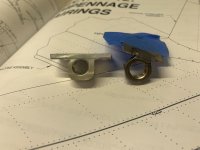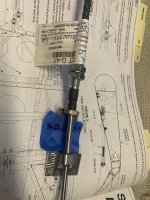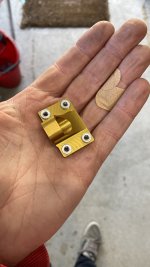I decided to order the machined aluminum elevator trim attach bracket from iflyrv-10. I noticed the hole size was different then the welded one that comes on the kit. The plans say this attaches to the CT-Q-43 cable. But that’s actually a much larger bolt and neither bracket fits on that cable. In the second picture, that’s as far as I can get the brackets to slide over the cable.
What am I missing here?
What am I missing here?







